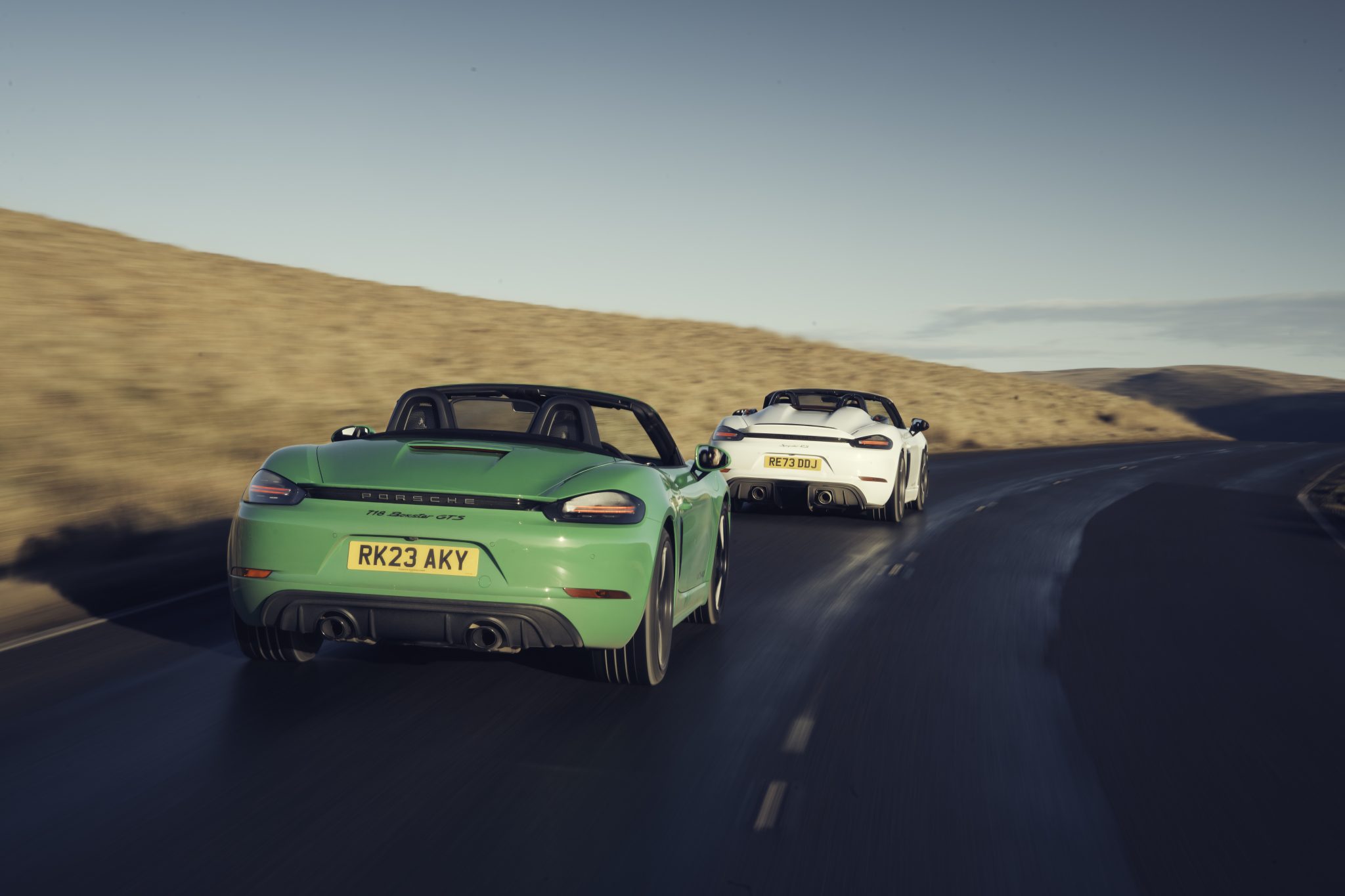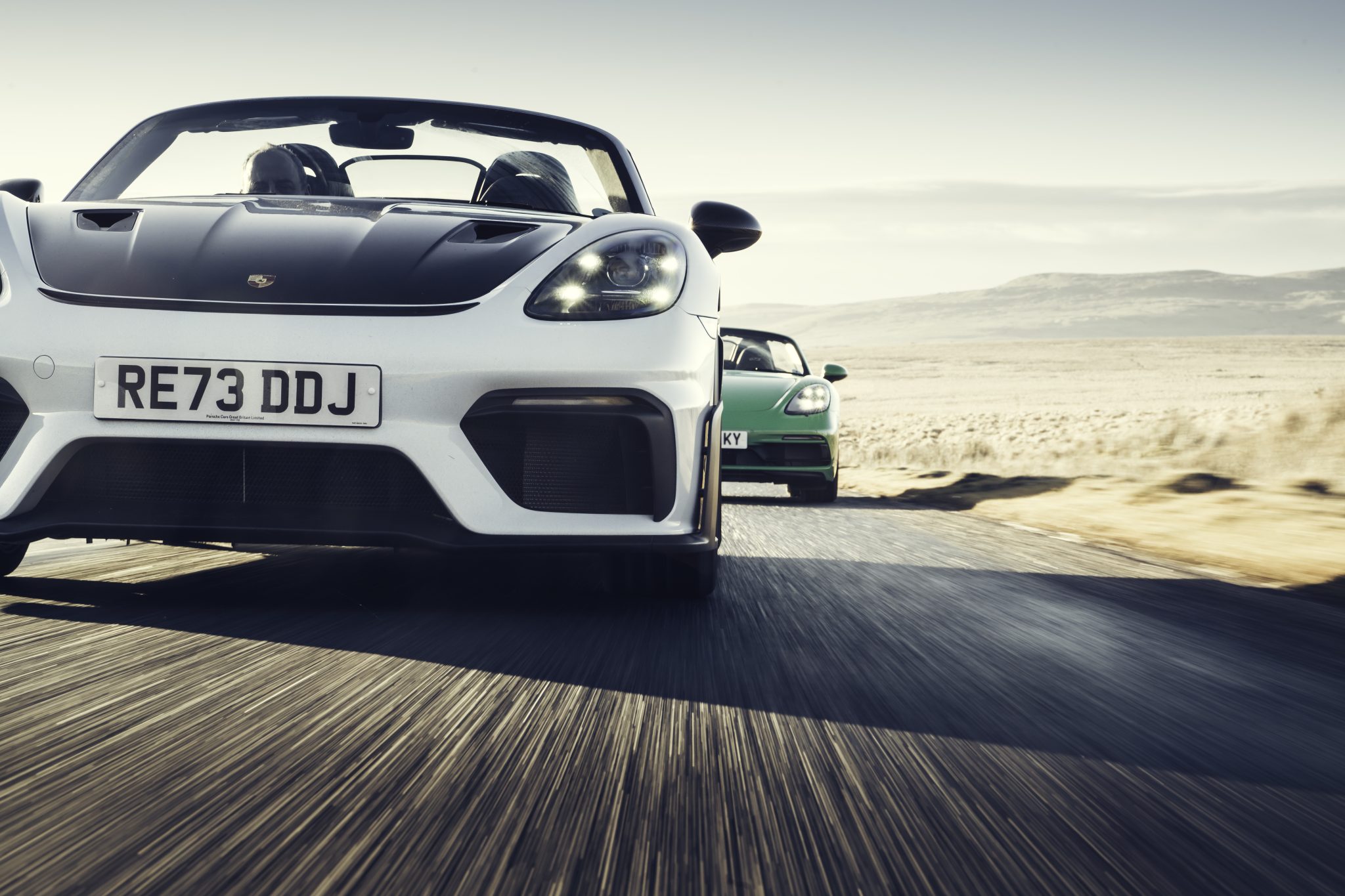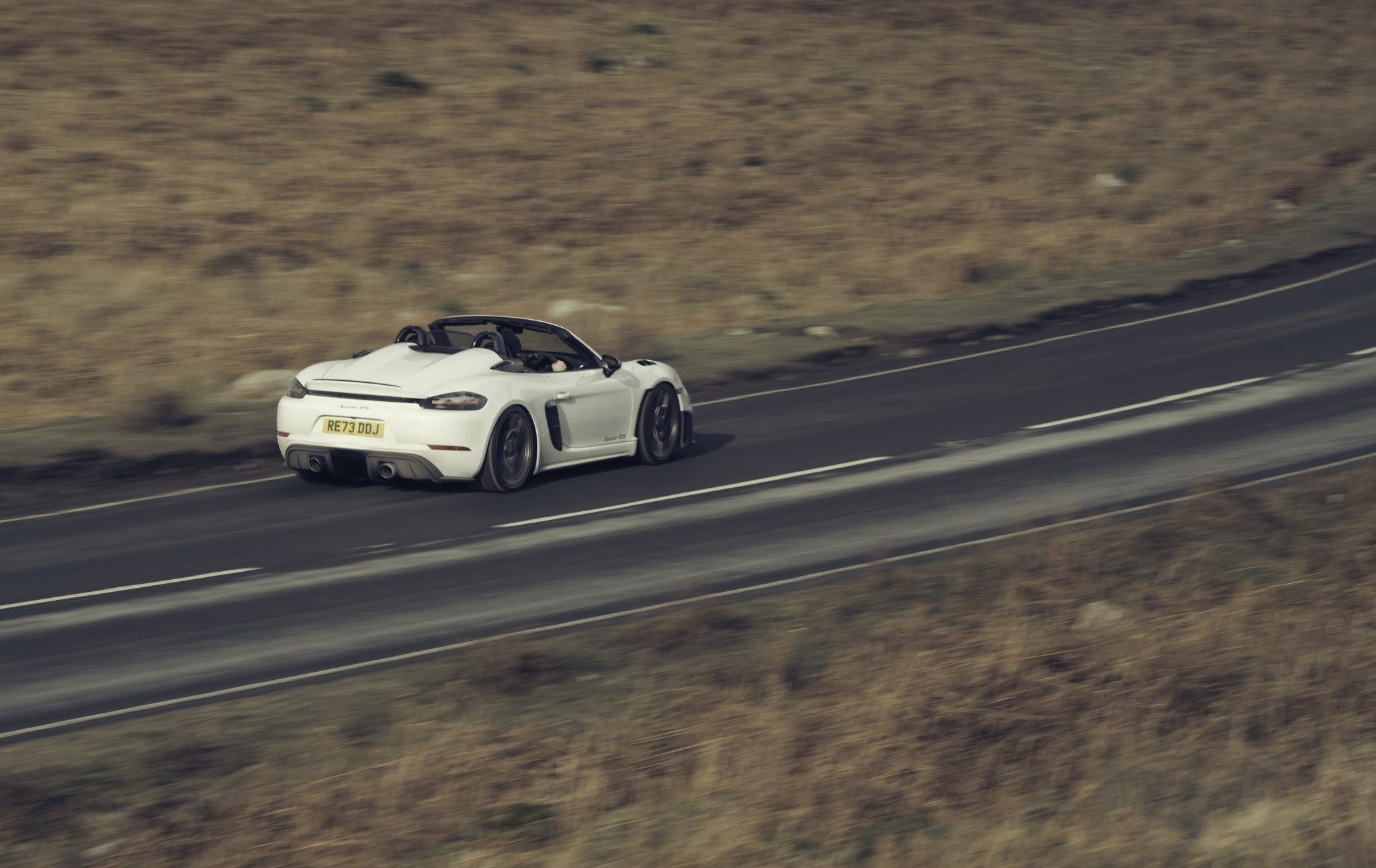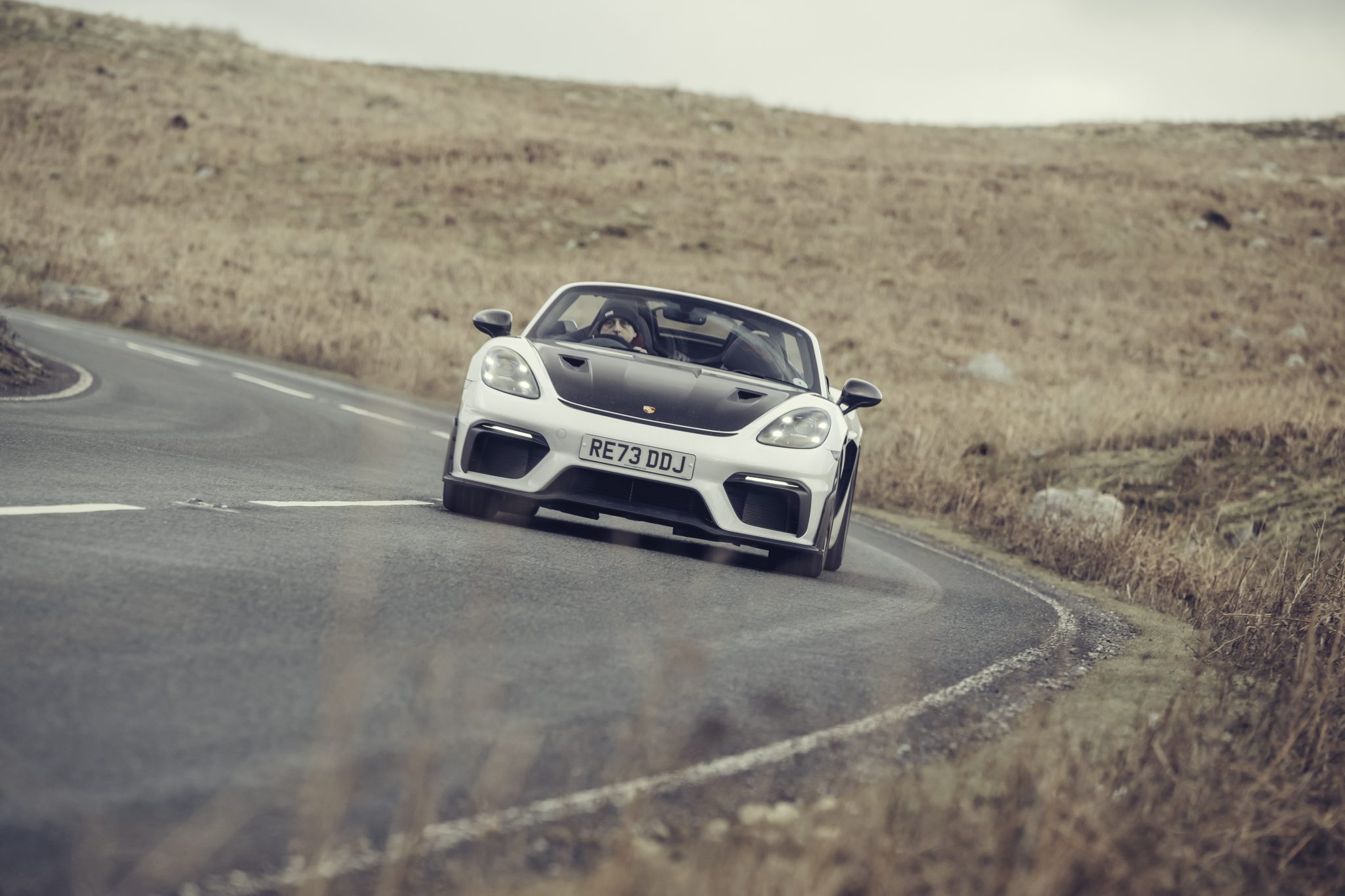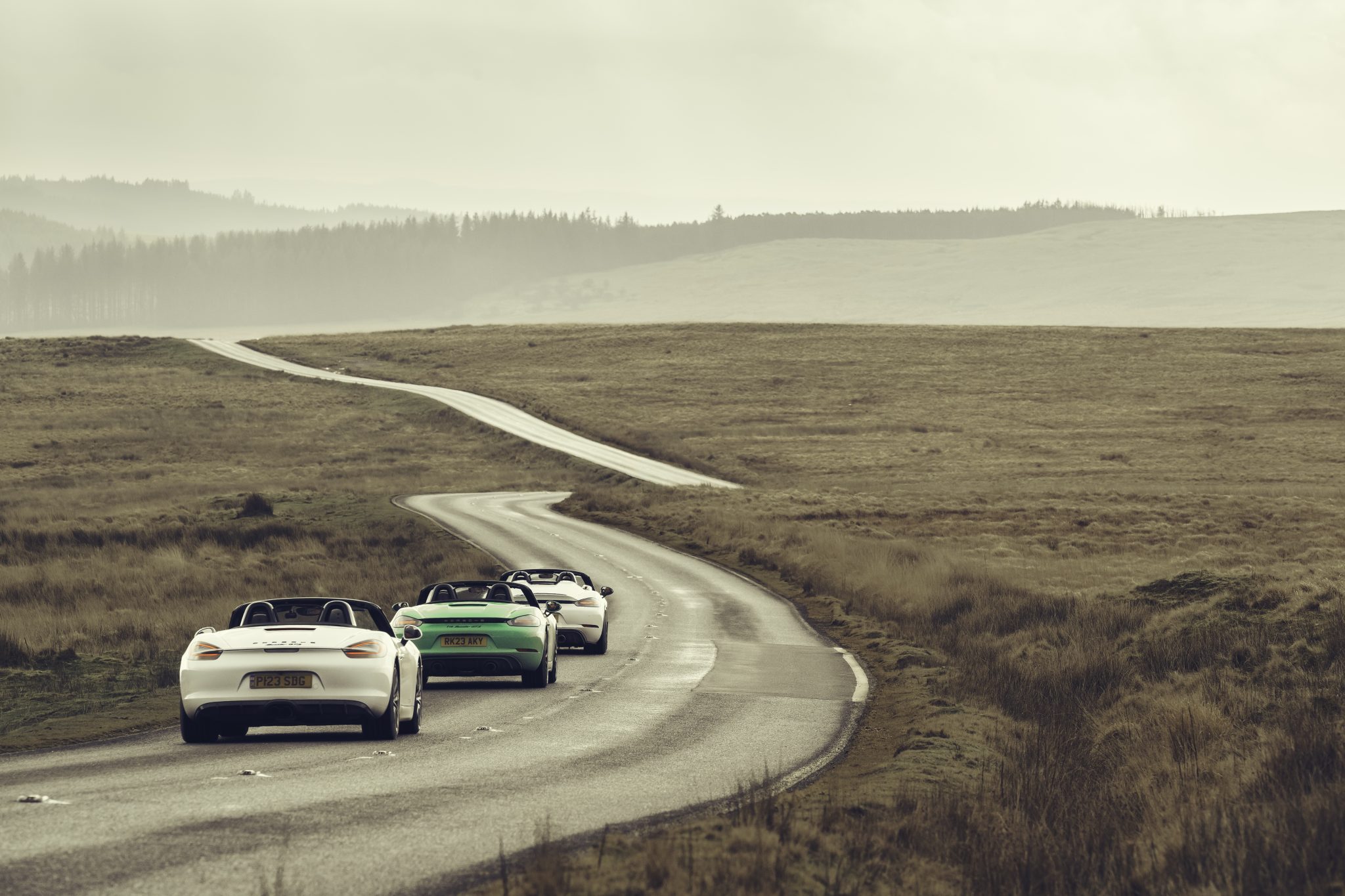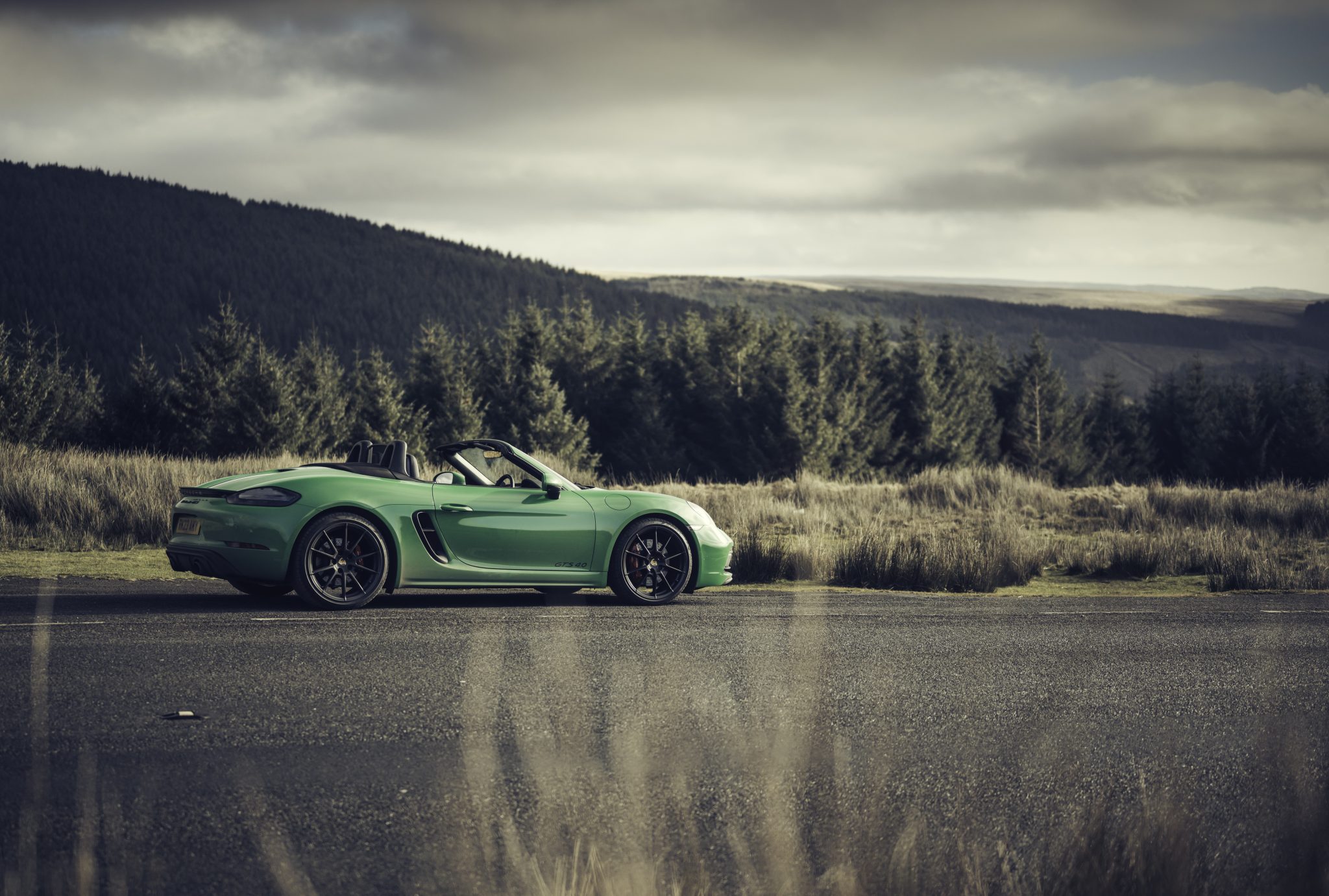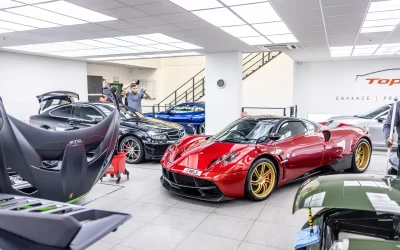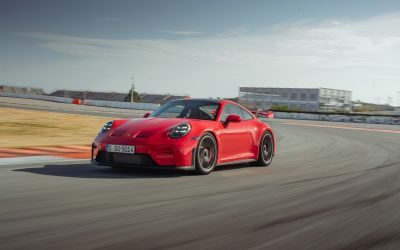What you’re looking at is the most expensive Porsche Boxster on sale and I’m guessing there’s nothing too surprising in that. Apart from this: you’re looking at the wrong car. The most expensive Boxster you can buy is that nice, green Boxster GTS 4.0, because the white car isn’t actually a Boxster at all. I’ve read and re-read the press release and nowhere is this car referred to as a Boxster. Semantics? Maybe, but then why does the mechanically identical GT4 RS still get to call itself a Cayman?
Porsche 718 Boxster GTS vs Spyder RS
Porsche actually dropped the Boxster name from the non-RS Spyder too, having retained it for the previous generation Spyder. I woke up this morning still wondering why. But now I’ve spent a day in the mountains with both cars, I think I know the answer. Which, because I don’t get to dispense even the most minor of minor cliffhangers nearly often enough, I’ll return to shortly.
Porsche 718 Boxster GTS VS Spyder RS Price Comparison
For now, however, the question in need of an answer is whether the Spyder RS can possibly be worth the additional £50,199 Porsche asks over the price of the Boxster GTS. There are a lot of very nice brand new cars that sum of money will buy, not to mention 93 per cent of a standard 718 Boxster.
718 Spyder RS vs 718 Boxster GTS
|
|
718 Spyder RS |
718 Boxster GTS 4.0 |
| Engine | 3996cc, 6-cyl, naturally aspirated | 3591cc, 6-cyl, single turbo, hybrid |
| Transmission | 7-speed dual-clutch, RWD | 8-speed dual-clutch, RWD |
| Power | 493bhp | 533bhp |
| Torque | 332lb ft | 450lb ft |
| Weight | 1410kg | 1595kg |
| Power to Weight | 350bhp/tonne | 334bhp/tonne |
| 0-62mph | 3.4 seconds | 3.0sec (PDK only) |
| Top Speed | 191mph | 194mph |
| Price | £125,499 |
£75,300 |
| Ti Rating | 8/10 |
9/10 |
Understanding the Pricing Difference
It seems strange, does it not, that two cars so closely related, both using 3996cc engines of identical bore and stroke, directing their power through a seven-speed PDK gearbox (optional on the GTS), with a weight difference of just 25kg, should be priced so far apart.
Part of that pricing reflects the fact that the Spyder RS gets an engine that differs in no significant way to that used in the Carrera Cup race car, the fastest paddleshift gearchange I know, fully adjustable suspension and various lightweight bits, including a CFRP bonnet and front wings, plus that roof system which we’ll be getting to in a minute. You can option in the Weissach Pack for £9309 but it’s only bits of cosmetic carbon here and there. Don’t believe those who tell you it has titanium exhausts, because it’s only the ‘tailpipe trim’ that’s titanium, nor that it has magnesium wheels – the pack merely gives you the right to spend an additional £11,573 on those.
The Porsche GT Product Lineage
The rest of the money is paid in recognition of the fact that, whether it says so or not, this is a Porsche GT product, a car developed by that same happy bunch of slightly unhinged geniuses that have been bringing us such cars for fully 25 years now. It is not a limited production car, though the extraordinary ability of demand to outstrip supply of every GT car made gives the impression that it is.
It is also a significant car: not just the first open car to receive the full GT treatment, engine and all, but also the last – I almost said Boxster – of a line of cars that dates back to the original 1996 Boxster, the car that started Porsche back on its road to recovery. Or at the least the last to be powered by anything other than electrons.
Driving Experience
We meet, as ever, on a Welsh mountainside. Dan is wearing his most smug face because it’s well below zero out here and he’s wandered over in the GTS with its standard heated steering wheel and seat keeping his fingers and backside within their preferred operating temperature envelope. The Spyder RS has neither. What it does have is Michelin Pilot Sport Cup 2 tyres, which are superb on warm race tracks but about as out of their comfort zone (and outside their operating temperatures) as a sea lion in a sauna. Below zero degrees, the Cup 2s are fine right up to the instant they are not. Grip or go are your options because there’s no middle ground worthy of the mention. Dan’s GTS has Pirelli P Zeros, which, while more a summer than a winter tyre, knuckle down and just get on with the job.
Grudgingly he lowers his roof. It takes seconds and requires the attention of one joint of one finger. The Spyder RS roof is a challenge of a rather different magnitude. Taking it off is fiddly, though easy enough, as is folding it up and stowing it; but even with Porsche’s own guidance video, it took both of us plus a Rolls-Royce aerospace engineer several goes before we mastered putting it back on again. I guess owners will just learn.
But I’ll tell you this: get that race motor percolating and all the little trials and indignities required to bring the Spyder RS to this place count as nothing. I am minded to remember that the very first Boxster had a fraction over 200bhp to its name – this one has just a little less than 500bhp. It’s as nuts as it sounds, and as the revs rise toward the 9000rpm limit, it sounds absolutely nuts.
With the intakes inhaling great drafts of air from just behind your right shoulder, the experience is dominated by the sound of that motor, even more than the thrust it delivers. But it’s a learning experience. Drive the Spyder RS as you might almost any other and it will be merely rather invigorating; what you have to teach yourself is it needs to work in a different zone and accept that there’s nothing wrong in keeping it between 6500rpm and 9000rpm where it works best. What that means is that the crankshaft speed at which most engines start to give up, is the one at which this one starts to get going.
After a few miles of this, you look down at the rev counter, see 7500rpm and instead of instinctively reaching for another ratio, you think it’s coming nicely onto the boil. And then you are treated to a yowling, howling orgy of mechanical excess, made all the better for having nothing between you and the heavens.
But what about that chassis? To cut a very long story down to just four words, you find a way. Treat it like a challenge, not to subdue this unruly beast by your sheer force of mind and speed of your reactions because that way a trip to Brecon hospital lies, but almost to fool it into behaving itself. Don’t give it an excuse with a bit too sharp a jab of throttle here, a touch too much lock too quickly applied there. Ease it along, channel your inner Jackie Stewart, think about that egg between your foot and the throttle pedal and do nothing to make it crack. And then it will fly across the landscape and you’ll be left in no doubt at all that what you are commanding is a proper Porsche Motorsport department car, a true thoroughbred and really quite unlike any other Boxster you’ve driven. Because, and we must keep remembering this, it’s not really a Boxster. Is it?
Comparing the Spyder RS VS GTS
WEIGHT
There’s a little less room in the GTS because its seats are slightly thicker and its engine spins into life with little fanfare. Would you be surprised to learn that, as standard, it’s actually 5kg lighter than the Spyder RS, and only 25kg heavier once fitted with a comparable two-pedal transmission? I was. In the 911 world the GTS model is 95kg heavier than the RS despite all the latter’s vast and extensive aerodynamic addenda, none of which the Spyder RS has.
Gearbox
It’s a shame too that the RS is not available with manual gears: Porsche makes much of the fact that unlike its 718 Cayman GT4 RS sister, the Spyder RS is a car built entirely for the joy of open road driving and not at all for setting lap times, and softens its suspension and ditches almost all the aero to make the point. That being the case, why not offer its superb six-speed manual too? It can’t be a torque handling issue because the GTS has no less, and though I’ve read it’s a packaging issue, if it can attach to one 4-litre flat-six within that shape, why not another?
Even so there’s no denying that the GTS – a PDK-equipped example in this case – feels frightfully sensible by comparison. At least at first. Yes it revs to 7800rpm which is decent, but peak power comes at 7000rpm, compared to 8400rpm for the Spyder RS. The sound is deeper and quieter too, a more classic flat-six chunter than the wonderfully lunatic ravings of the RS.
HANDLING
That it is an easier car to drive should surprise no one. It may have a fraction less torque, but there’s far more of it in those places we traditionally expect to find it, the effect being that in what may loosely be described as ‘normal’ driving, the GTS actually feels quicker. Their respective power and torque curves would be interesting to see, just to find how many revs you’d need on the clock before the Spyder RS actually accelerated more rapidly. My guess is that it would be plenty.
But there are times too, out here on these part-frozen hills, where it’s just better too. It doesn’t turn in with quite the same incisiveness but the slightly softer feel of its springs (surprisingly, there’s not much to tell between the two for ride quality) are better suited to the conditions. There’s a bit more reassuring meat in the steering response and of course you don’t progress from place to place constantly managing the tyres. It may not give back quite so much, but so too does it also ask a hell of a lot less of you in return.
CONCLUSION
By now some of you will have concluded that this is an unfair test, if only for the difference in the type of tyre on which each car was supplied. You might venture, and we would not disagree, that the Spyder RS would give a dramatically different and better account of itself were we to test it in the summer, or in Spain, or on anything this side of a set of Cup 2s. But we can only report as we find on the cars as they are supplied. And the truth is that, soft-bottomed, middle-aged bloke that I am, when we were done, I fairly fled to the warm and inviting interior of the GTS for the trip home.
Would the verdict have been different in warm sunshine? I can only guess, and my guess is that it would have been closer by far, but that the GTS would still have nicked it.
And this is why. It is the GTS that feels like the ultimate development of the Boxster. It still has that sublime quality possessed by all those (at least with six cylinders) of being a lovely place to be even when you’re not driving like your tail is on fire. It can do it all, and do it in all weathers too. It’s a sports car for sure, but a touring machine too. The Spyder RS feels completely different: it feels like a Motorsport car that’s invaded the Boxster’s bodywork. And that is why I reckon they got rid of the name: for all it has gained, that all season, all reason quality that is synonymous with the Boxster proposition has gone.
So what’s wrong with that? Well, there’s at £50k price difference and the fact that if you really want to go mad in a mid-engined two-seat Porsche, you should go the whole hog and get a Cayman GT4 RS which is madder still by a distance, and a car I like so much I awarded it victory over a 911 GT3. And you don’t have to indulge in a spot of all-in wrestling every time it rains. The GTS, however, is sublime, the best of the modern Boxsters by far, and a car I’ll really miss once it’s gone. But the best of them all? Read on.
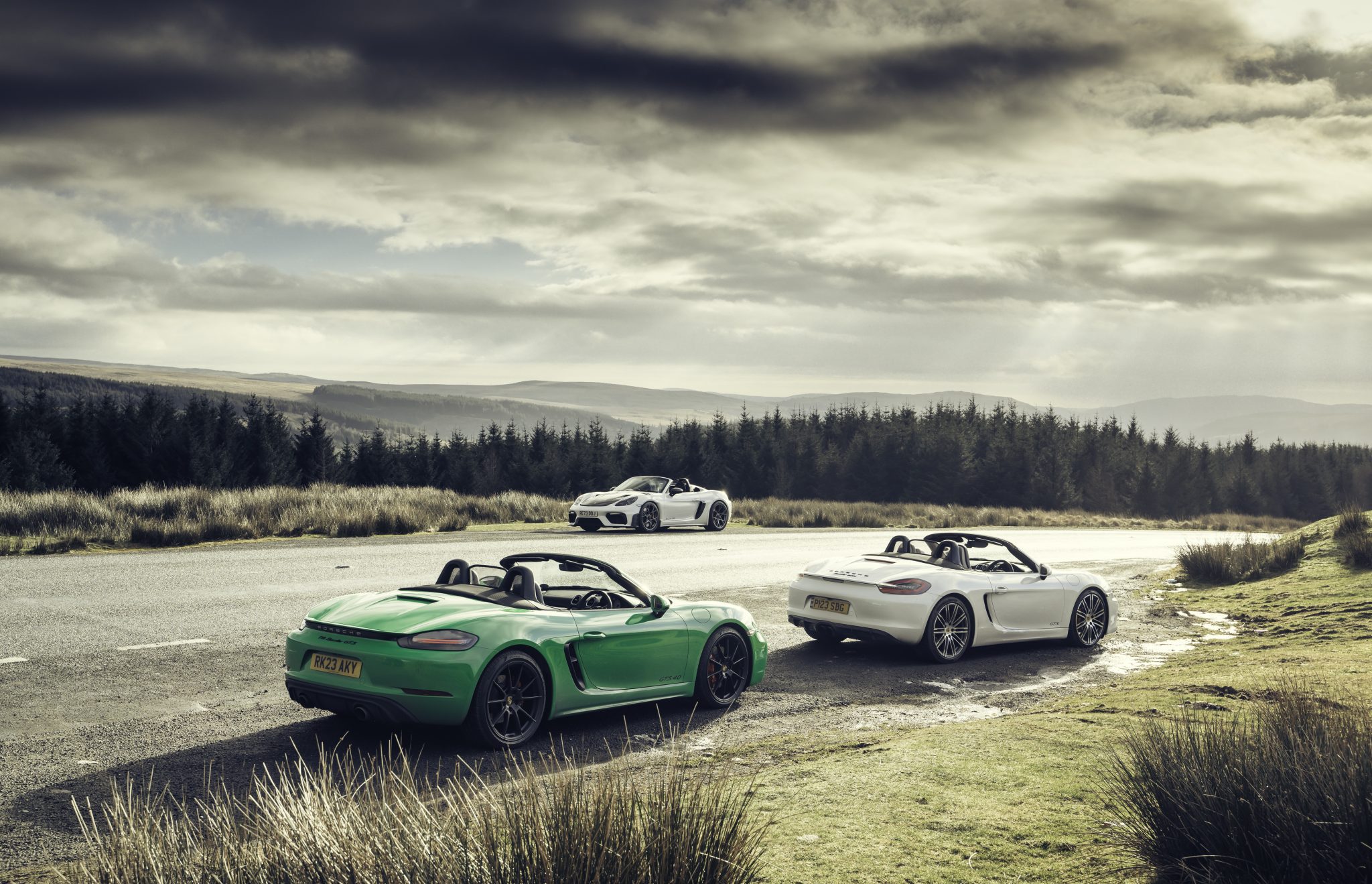
The half-price alternative
The idea was simple: we knew the GTS looked great value next to the Spyder RS, but how would the GTS look next to another far more affordable, older Boxster, yet one still with six cylinders, another GTS no less? Enter Steve Gaskin and his lovely 2015 981-generation GTS, immaculate with just 22,000 miles under its wheels and also equipped with a PDK gearbox. You can find these for half current GTS money and even the nicest examples are around £50,000, a huge saving over a new car.
And what’s fascinating about it is that the area in which you’d expect it to be most deficient – its off the peg 3.4-litre motor – turns out to be its strongest suit. It may be 70bhp down on the newer car’s 4-litre engine, but it sounds even better, a little more raw, layered and interesting. Better, the PDK covers this engine’s key failing – a lack of low down torque exacerbated by the needlessly wide ratios of the manual ’box – brilliantly well. No, it’s not as quick, but the gap is smaller than you might imagine.
But the current car still has its measure thanks to two sizeable improvements in dynamic ability. Most fundamentally, it’s simply much more structurally robust, the sense of platform rigidity feeling subjectively closer to a Cayman than the 981 Boxster. Bluntly, the older car shakes just a bit over coarse surfaces, and especially when loaded up mid-corner.
This is also at least one suspect in the second issue: the older car just doesn’t steer as well, a symptom you’d expect of a more torsionally suspect chassis. But we should remember too that this was the first generation of Porsche to use electric power steering and it shows. Whether it is synthesised or not, the steering of the more modern car feels more natural, reassuring and communicative.
Then again it would be strange were this newer, more expensive Boxster not substantially better, for that would represent progress in the wrong direction. For little more than half the money, the 981 Boxster GTS remains a delightfully tempting proposition.
Photography by Olgun Kordal

